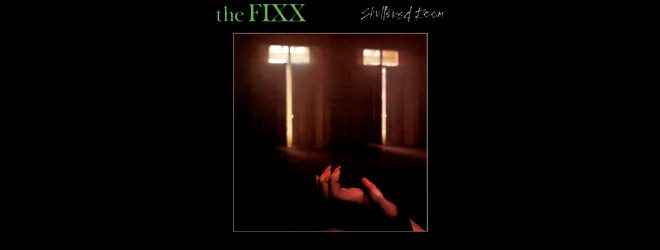
Released on May 13, 1982, Shuttered Room is The Fixx’s debut offering. The sense of urgency that has become a distinctive characteristic of many of the songs of the English band was immediately apparent as soon as track number one plays. “I Found You” has the elements of a typical Post-Punk New Wave song—upbeat tempo, angular rhythm guitar, ubiquitous synthesizer melodies, driving bass-line, and frenetic lead vocals.
The dance-floor-enticing mood seeps smoothly into the ensuing, equally jagged-sounding “Some People.” The glittery lights then turn a bit dim with the synth-soaked mid-tempo ballad “Stand or Fall.” The feverish playing returns with “The Strain,” which will fit well on a playlist that includes fellow flanged-guitar-heavy classics of the genre such as Duran Duran’s “Planet Earth,” Rational Youth’s “Saturdays in Silesia,” Wire Train’s “Chamber of Hellos,” and B-Movie’s “Nowhere Girl.” And then there is the hauntingly catchy Goth stomper “Red Skies,” which has very well stood the test of time, continuing to age potently like fine wine and remaining the favorite The Fixx song of many New Wave enthusiasts.
“Lost Planes” relaxes the listener initially for a bit, owing to its slow buildup, only to catch up eventually with the overall danceability of the whole album. Following next is “Cameras in Paris,” whose infectious Oriental keyboard melody may remind the initiated of similar excursions by The Vapors (“Turning Japanese”), Japan (“Gentlemen Take Polaroids”), Alphaville (“Big in Japan”), and The Cure (“Kyoto Song”).
Another slowing down of pace comes in the form of “I Live,” whose metallic percussive parts, catchy sing-along-worthy chorus, and hint of progressiveness courtesy of the multilayered vocal harmony foreshadowed the intricate song arrangement that became a standout feature of many of The Fixx’s songs through the rest of its discography; for instance, “Secret Separation,” from 1986’s Walkabout; and “Anyone Else,” from 2012’s Beautiful Friction. At barely three minutes, the penultimate title track is short, swift, sweeping, and slashing like a Devo whip. Finally, The Fixx closes its Shuttered Room with the undulating, waving, and pulsating rhythm and beat of “The Fool.” Only a New Wave fool would want to exit that room and never come back.
To date, The Fixx has released ten albums, spawning countless chart-topping singles over the years. However, to really dig the band’s sonic aesthetics, one has no other path to take but to return to the beginning and enter the doors of Shuttered Room, where it all began. Longtime fans of the band will surely rediscover the beauty of this thirty-five-year-old gem, whereas new and young enthusiasts of Alternative Rock and Indie Pop may certainly use it as a good starting point in learning about the roots of their preferred music genres. For instance, tracing back the guitar-oriented New Wave sensibilities of recent bands like Kaiser Chiefs (“I Predict a Riot”), Franz Ferdinand (“Take Me Out”), and British Sea Power (“Bad Bohemian”), they will inevitably find The Fixx’s electrically charged and frenetically bursting beginning along the way.






No comment